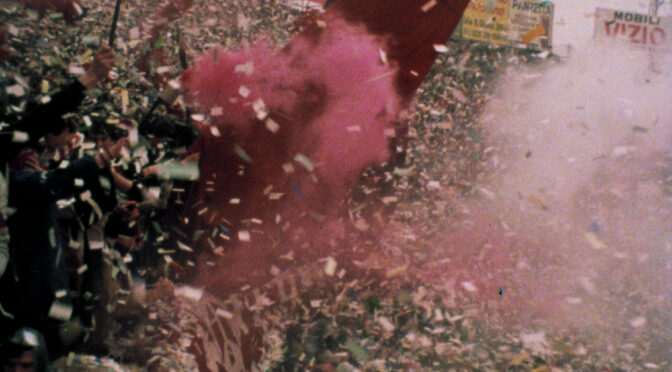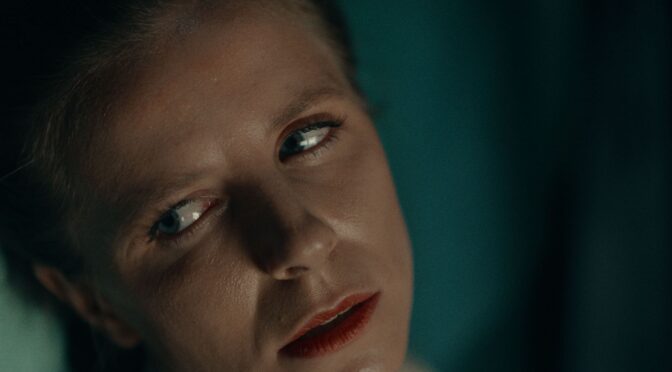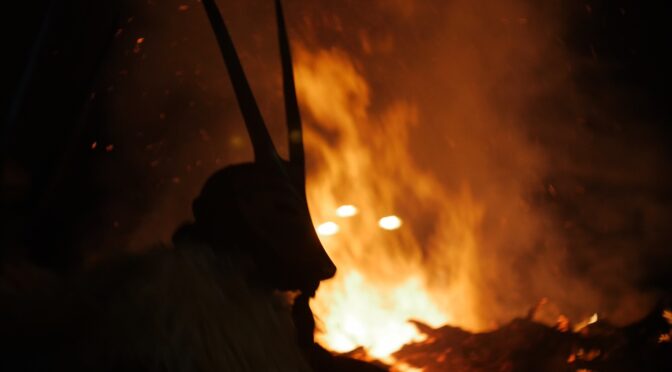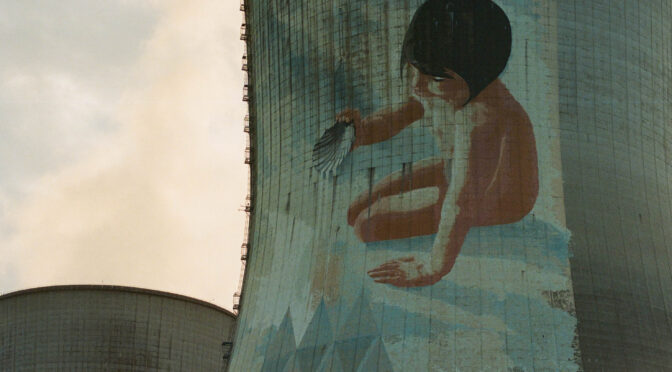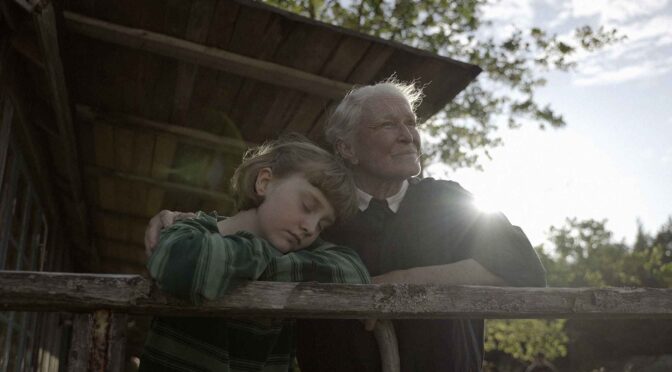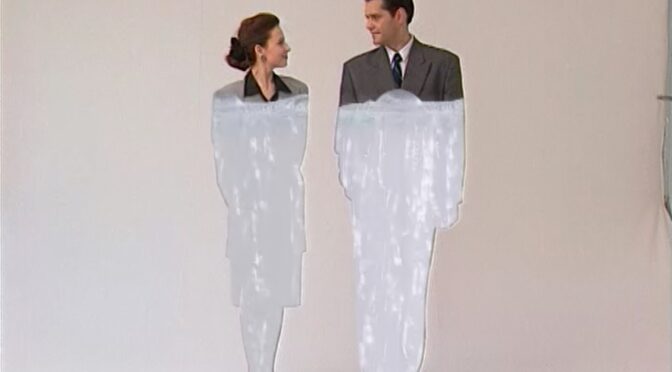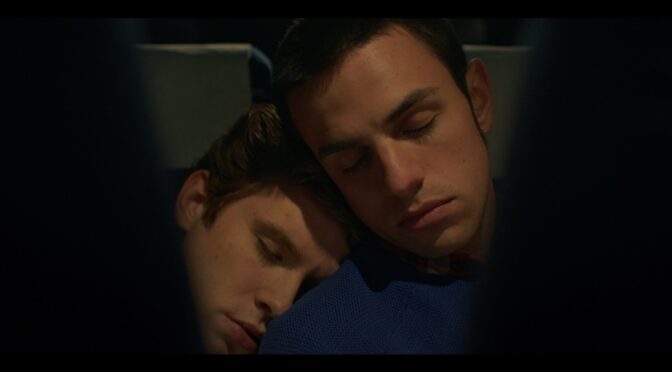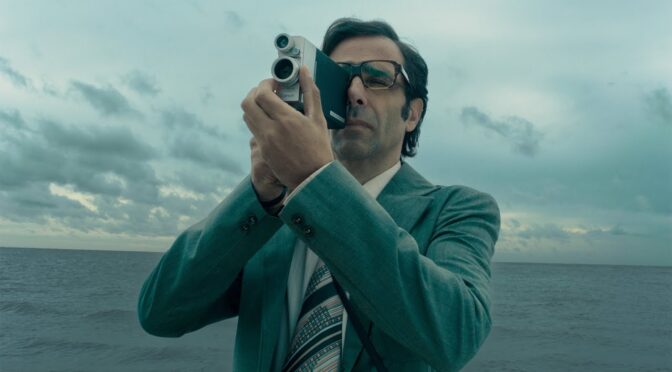Una straordinaria capsula del tempo ci trasporta nella Torino di fine anni Settanta, dove una gioventù smarrita vive la nascita di un fenomeno, quello ultras, che diventerà via via sempre più importante nella vita pubblica del nostro paese.
Continua la lettura di “RAGAZZI DI STADIO” DI DANIELE SEGREArchivi categoria: Torino Film Festival
EUROPA CENTRALE BY GIANLUCA MINUCCI
Article by Silvia De Gattis
Translation by Cinzia Di Bucchianico
Throughout Gianluca Minucci’s debut film, viewers find themselves in a state of constant auditory, visual, emotional, even tactile, and olfactory hyper-solicitation.
Continua la lettura di EUROPA CENTRALE BY GIANLUCA MINUCCIEUROPA CENTRALE di Gianluca Minucci
Per tutta la visione dell’opera prima di Gianluca Minucci lo spettatore si ritrova in uno stato di costante ipersollecitazione sonora, visiva, emotiva, persino tattile e olfattiva.
Continua la lettura di EUROPA CENTRALE di Gianluca Minucci“THE BRINK OF DREAMS” BY NADA RIYADH E AYMAN EL AMIR
Article by Lisa Cortopassi
Translation by Aurora Monteleone
In the opening image of The Brink of Dreams, we can see six girls running through a field. As in the case of the scene of three children walking in the Icelandic countryside from which Chris Marker’s Sans Soleil (1983) takes its cue, this moment also evokes the sensation of witnessing a dream, a vision of hope.
Continua la lettura di “THE BRINK OF DREAMS” BY NADA RIYADH E AYMAN EL AMIR“THE BRINK OF DREAMS” DI NADA RIYADH E AYMAN EL AMIR
Nell’immagine che apre The Brink of Dreams vediamo sei ragazze che corrono in un campo. Come nel caso della scena dei tre bambini che passeggiano nella campagna islandese da cui prende le mosse Sans soleil di Chris Marker (1983), anche qui si ha la sensazione di assistere a un sogno, a una visione di speranza.
Continua la lettura di “THE BRINK OF DREAMS” DI NADA RIYADH E AYMAN EL AMIR“IMMÉMORIAL, CHANTS DE LA GRANDE NUIT” BY BÉATRICE KORDON
Article by Lisa Cortopassi
Translation by Martina Bigi
Darkness, cold. A metallic melody and an off-screen voice introduce the spatial and thematic coordinates of Immémorial, Chants de la Grande Nuit. Legend has it that, in a primordial moment, the Gods tore the Night to reveal the “world of things.” This is how form, language, and day were created. Using this myth as a framework, Béatrice Kordon investigates on the “immemorial” time: a time that is both past and future, a time that leaves no trace and waves between death and birth, darkness and light.
Continua la lettura di “IMMÉMORIAL, CHANTS DE LA GRANDE NUIT” BY BÉATRICE KORDON“IMMÉMORIAL, CHANTS DE LA GRANDE NUIT” DI BÉATRICE KORDON
Buio, freddo. Una melodia metallica e una voce fuori campo introducono le coordinate atmosferiche e tematiche di Immémorial, Chants de la Grande Nuit. Si racconta di un momento primigenio in cui gli Dei avrebbero squarciato la Notte per far emergere il «mondo delle cose». Così sarebbero nate la forma, la parola e il giorno. Servendosi del mito, Béatrice Kordon conduce un’indagine sul tempo “immemorabile”: un tempo che è tanto passato quanto futuro, che non ha traccia e che è in bilico tra la morte e la nascita, tra il buio e la luce.
Continua la lettura di “IMMÉMORIAL, CHANTS DE LA GRANDE NUIT” DI BÉATRICE KORDON“IL CORPO”, BY VINCENZO ALFIERI
Article by Elisa Gnani
Translation by Silvia Matera
We are rarely forgiving with Italian fiction filmmaking. We tend to consider it like a box full of unassuming or mediocre products, but films like Il corpo prove us wrong.
Continua la lettura di “IL CORPO”, BY VINCENZO ALFIERI“IL CORPO” DI VINCENZO ALFIERI
Siamo spesso poco clementi con il cinema italiano di finzione. Tendiamo a considerarlo come uno scatolone pieno di prodotti scadenti o poco coraggiosi, ma film come Il corpo ci dimostrano che siamo in errore.
Continua la lettura di “IL CORPO” DI VINCENZO ALFIERI“TERRA INCOGNITA” BY ENRICO MASI
Article by Francesca Strangis
Translation by Giorgia Mazzù
Asleep on the grass, a man and a woman are awakened by the sound of screeching metallic noises. The man climbs a slight hill, driven by curiosity to see what lies beyond. On the other side, the world of technology: towering electric pylons and industrial plants dominate the view. The opening sequence of Terra Incognita (‘Unknown Land’) serves as a metaphor for the film itself, which explores the themes of energy supply and humanity’s survival on Earth through two opposing perspectives.
Continua la lettura di “TERRA INCOGNITA” BY ENRICO MASI“TERRA INCOGNITA” DI ENRICO MASI
Addormentati sull’erba, un uomo e una donna vengono risvegliati da suoni metallici stridenti. L’uomo sale su una lieve altura, spinto dalla curiosità di vedere oltre. Dall’altra parte, il mondo della tecnologia: tralicci elettrici e impianti industriali si ergono ingombranti alla vista. La sequenza di apertura di Terra incognita è metafora del film stesso, che, attraverso due prospettive opposte, tratta il tema dell’approvvigionamento energetico e della sopravvivenza dell’uomo sulla terra.
Continua la lettura di “TERRA INCOGNITA” DI ENRICO MASI“THE SUMMER BOOK” BY CHARLIE MCDOWELL
Article by Brigitta Mariuzzo
Translation by Martina Perrero
Grief is an island in the middle of the sea, where the summers of childhood have been embedded. A suspended place, waiting for a storm that is slow to break and of the arrival of those who have long since failed to return.
Continua la lettura di “THE SUMMER BOOK” BY CHARLIE MCDOWELL“THE SUMMER BOOK” DI CHARLIE MCDOWELL
Il dolore è un’isola in mezzo al mare dove sono rimaste incastonate le estati dell’infanzia. Un luogo sospeso in attesa di una tempesta che tarda a scoppiare e dell’arrivo di chi da tempo non vi ha più fatto ritorno.
Continua la lettura di “THE SUMMER BOOK” DI CHARLIE MCDOWELL“HIGHER THAN ACIDIC CLOUDS” BY ALI ASGARI
Article by Alessandro Pomati
Translation by Laura Cattani
In Tehran a search is taking place inside a big house: men are rifling through drawers and closets, boxes of personal belongings are being taken away. Nothing we have not already seen in the context of the Iranian dictatorship. But there is one jarring detail: the owner of the searched house is sitting petrified on the couch, while his place would be elsewhere, in a director’s chair, for example, directing that short, chilling sequence shot capturing the search. That is Ali Asgari, impatiently waiting for the authorities to do their work in his apartment-atelier and leave him alone, at least for the time being.
Continua la lettura di “HIGHER THAN ACIDIC CLOUDS” BY ALI ASGARI“HIGHER THAN ACIDIC CLOUDS” DI ALI ASGARI
All’interno di una grande casa di Teheran si sta svolgendo una perquisizione: uomini che frugano nei cassetti e nelle ante degli armadi, scatole di effetti personali che vengono portate via; nulla che non si sia mai visto nel contesto della dittatura iraniana. Ma c’è un dettaglio che stona: il proprietario della casa perquisita, seduto impietrito sul divano mentre il suo posto sarebbe altrove, su una sedia da regista, ad esempio, a dirigere quel breve e raggelante piano sequenza che immortala la perquisizione; si tratta di Ali Asgari, in impaziente attesa che le autorità svolgano il loro lavoro nel suo appartamento-atelier e lo lascino in pace, almeno per il momento.
Continua la lettura di “HIGHER THAN ACIDIC CLOUDS” DI ALI ASGARI“EIGHT POSTCARDS FROM UTOPIA” BY RADU JUDE E CHRISTIAN FERENCZ-FLATZ
Article by Romeo Gjokaj
Translation by Martina Marino
Radu Jude and Christian Ferencz-Flatz’s latest work is deeply rooted in the socio-political context of post-revolution Romania, narrating the last thirty years of the country’s history through the commercials that accompanied its people towards democracy. It is an experimental found-footage documentary, divided into eight chapters displaying dozens of commercials played back-to-back: an overwhelming and ever-changing flow of ideals, dreams and hopes. Thus, we find ourselves reliving a fragment of the utopia promised by the end of socialism, yet an utopia that, however, is jarring and full of contradictions.
Continua la lettura di “EIGHT POSTCARDS FROM UTOPIA” BY RADU JUDE E CHRISTIAN FERENCZ-FLATZ“EIGHT POSTCARDS FROM UTOPIA” DI RADU JUDE E CHRISTIAN FERENCZ-FLATZ
L’ultimo lavoro di Radu Jude e Christian Ferencz-Flatz affonda le sue radici nel contesto socio-politico della Romania post-rivoluzione, raccontando gli ultimi trent’anni della vita del Paese attraverso le pubblicità che hanno accompagnato il popolo rumeno verso la democrazia. Un documentario sperimentale di montaggio, suddiviso in otto capitoli che presentano decine di spot riprodotti uno dietro l’altro: un flusso travolgente di ideali, sogni e speranze in continua evoluzione. Ci troviamo così a rivivere un pezzo dell’utopia che la fine del socialismo prometteva, un’utopia però stridente e piena di contraddizioni.
Continua la lettura di “EIGHT POSTCARDS FROM UTOPIA” DI RADU JUDE E CHRISTIAN FERENCZ-FLATZ“DUINO”, BY JUAN PABLO DI PACE AND ANDRÉS PEPE ESTRADA
Article by Alessandra Sottini.
Translation by Irene Pezzini.
(Sexual) identity and love. When these planes of emotional and subjective experience intertwine with each other during adolescence, inevitably everything becomes amplified and confused. And when the awareness that comes with maturity, you either come to terms with yourself or you remain in a limbo.
Continua la lettura di “DUINO”, BY JUAN PABLO DI PACE AND ANDRÉS PEPE ESTRADA“DUINO” DI JUAN PABLO DI PACE E ANDRÉS PEPE ESTRADA
Identità (sessuale) e amore. Quando questi piani dell’esperienza emozionale e soggettiva si intrecciano durante l’età adolescenziale, inevitabilmente tutto si amplifica e diventa confuso. E con la presa di coscienza della maturità, o si viene a patti con se stessi oppure si permane in un limbo.
Continua la lettura di “DUINO” DI JUAN PABLO DI PACE E ANDRÉS PEPE ESTRADA“CORRESPONSAL”, BY EMILIANO SERRA
Article by Alessandro Pomati.
Translation by Alessandra Rapone.
An informer for the armed wing of the Argentine dictatorship in 1978, called Ulrich, works with images: photographic images or those created by amateur film cameras. This may be a didactic detail, since the way the director Emiliano Serra (in his first fiction feature film) ‘uses’ his main character, in particular the way he captures and defines him in the writing, makes him, in turn, a ‘camera’: the narrative proceeds only when he is present, and the viewer sees and hears only what Ulrich sees and hears. Furthermore, the impassivity of the protagonist’s face (played by Gabriel Rosas) and the monochord setting of his voice, able to read both a confidential report and an article about the upcoming football World Cup with the same intonation, emphasize the idea of a coldness that only a machine or an inanimate object could have. The eyes, not surprisingly, are the only expressive feature.
Continua la lettura di “CORRESPONSAL”, BY EMILIANO SERRA
